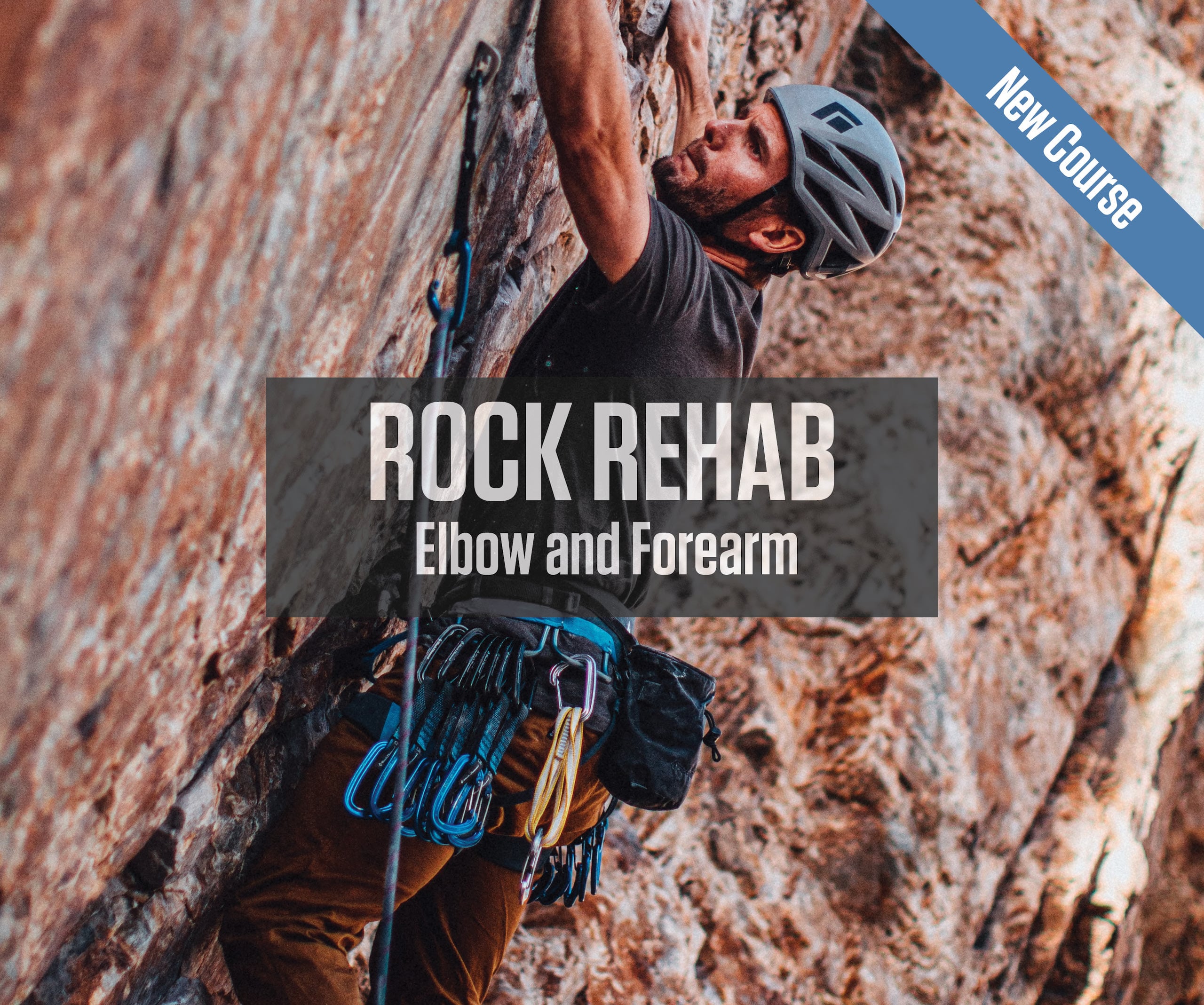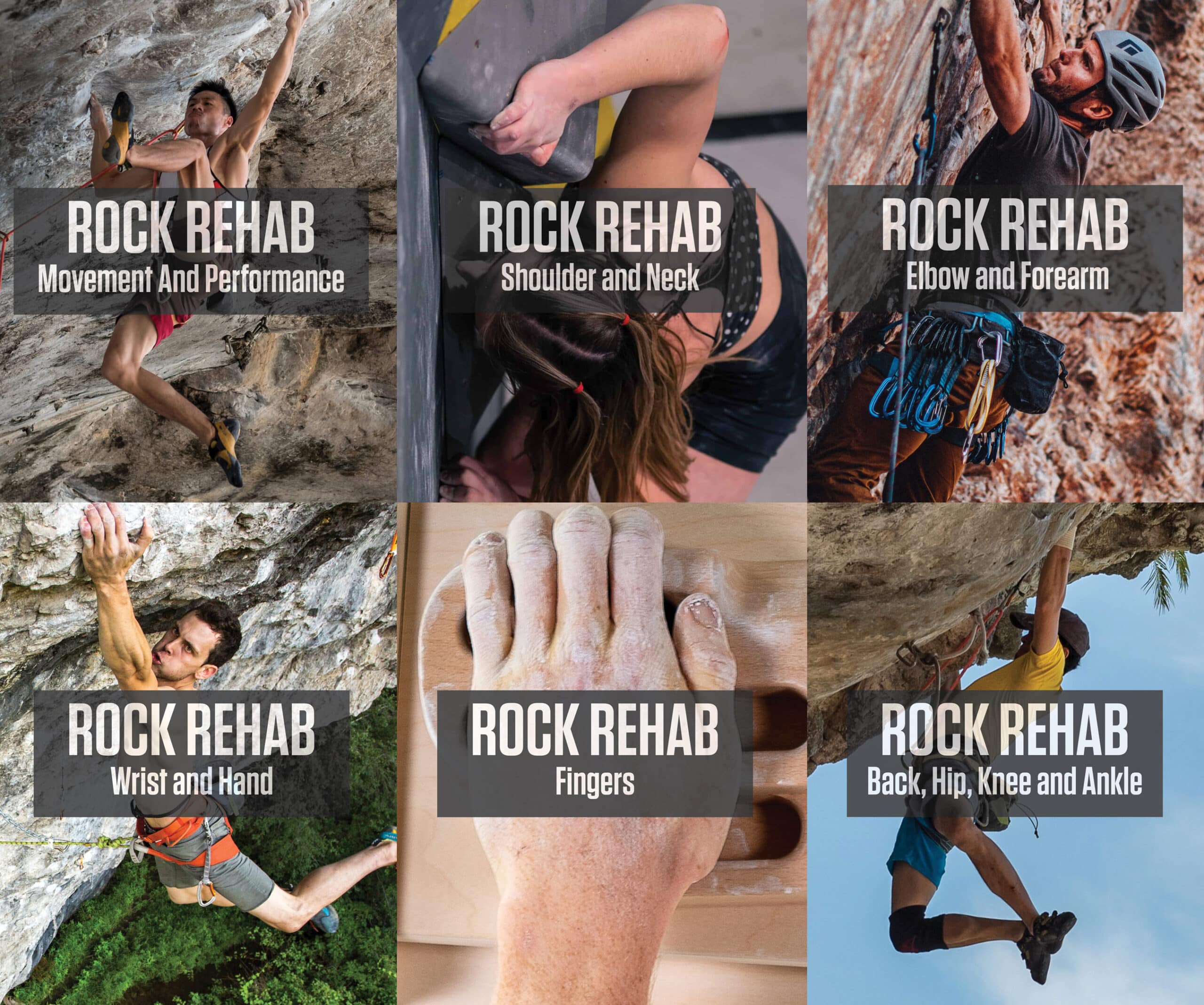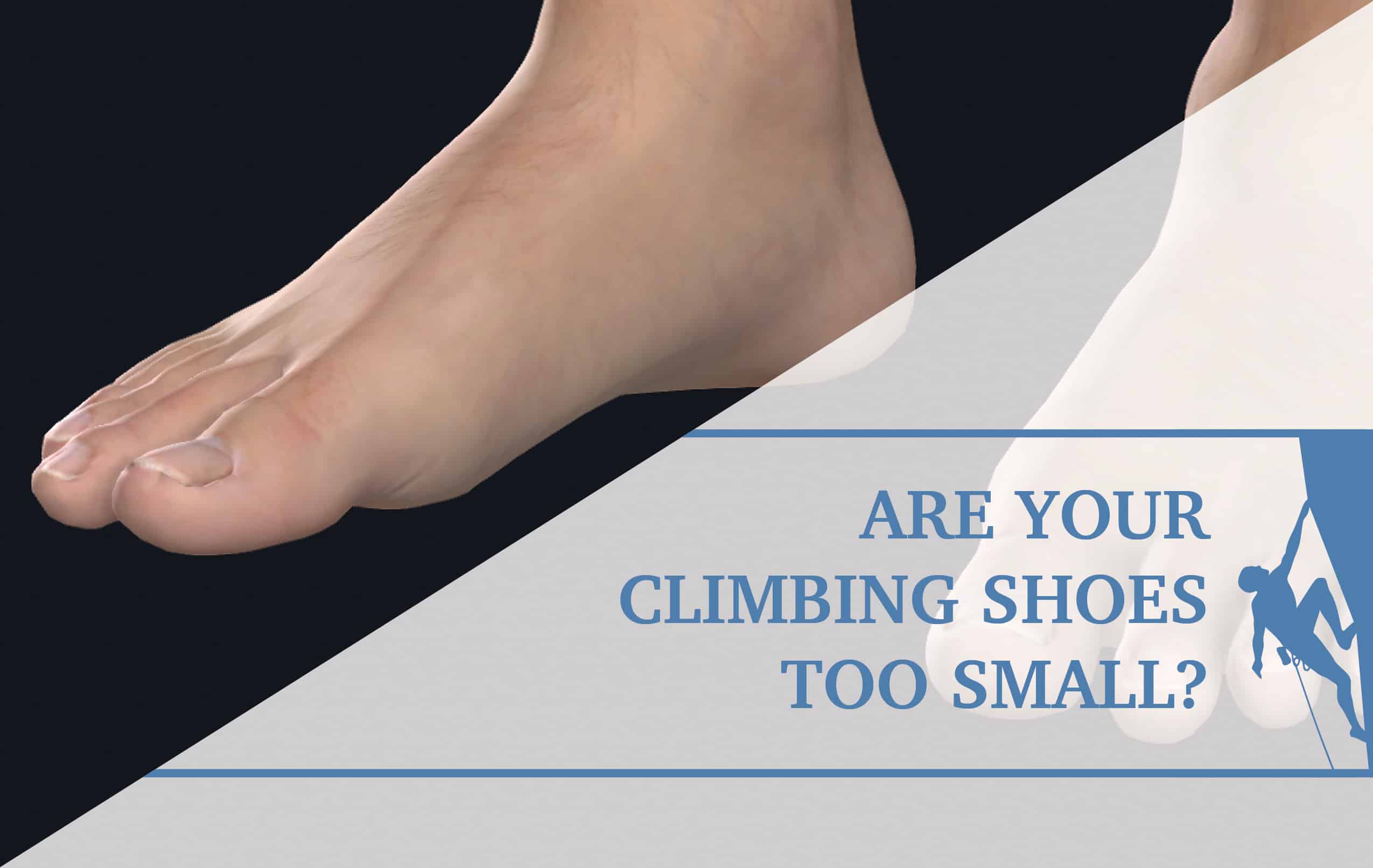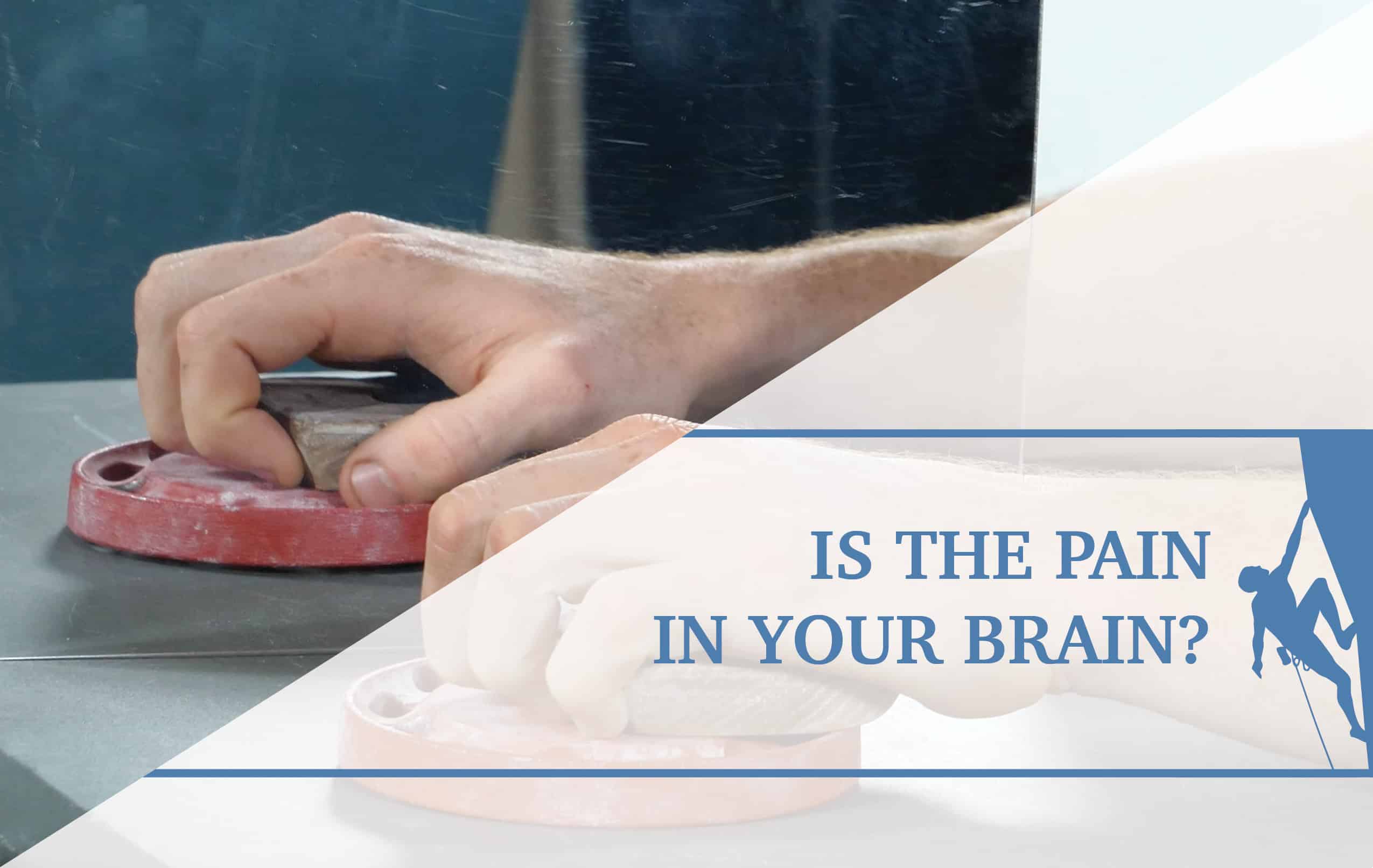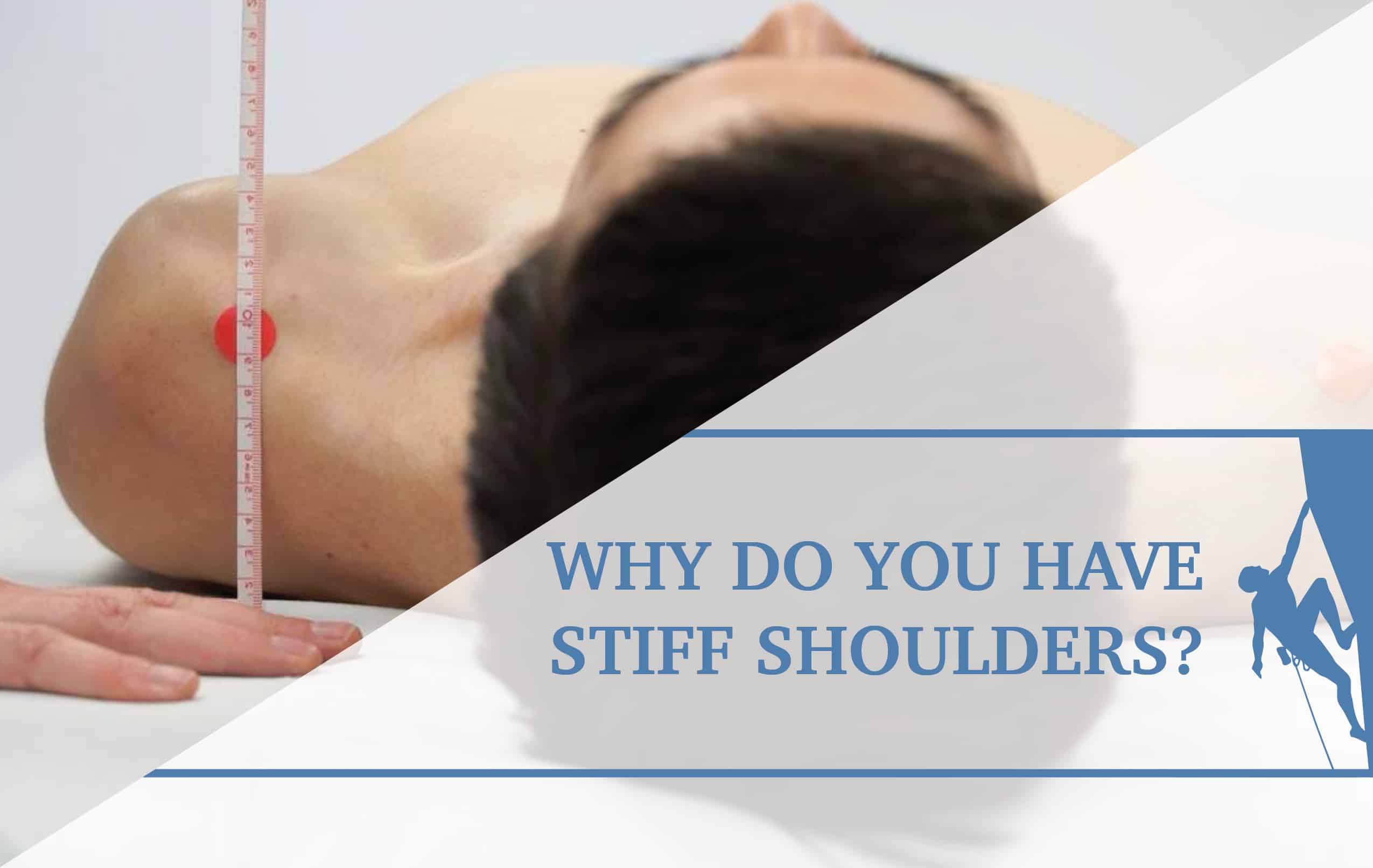A Complete Program for Climbing Lateral Elbow Pain
Treating tennis elbow (outside elbow pain) in rock climbers can be tricky. That is why it is important to be systematic in process. The best way is to utilize a rehabilitation framework, such as the rock rehab pyramid that is the book Climb Injury-Free. Starting with unloading the tendons that insert on the lateral elbow, then working to improve the climber’s mobility and strength as well as increasing the efficiency of his movement. Let’s take a look at the process.
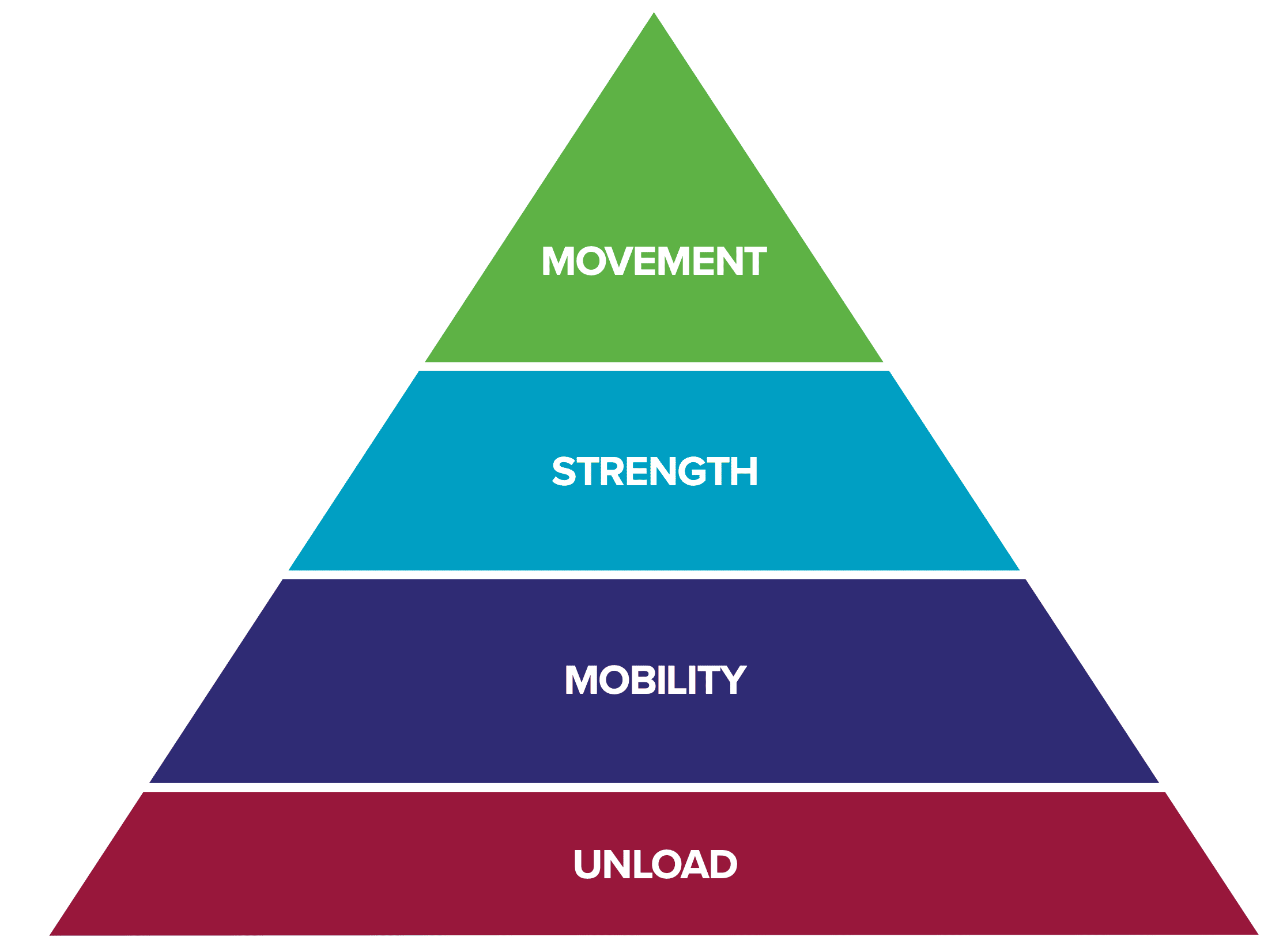
The Rock Rehab Pyramid
Unload The Tissues
Typically, I would use leukotape in a diamond pattern surrounding the lateral epicondyle to unload and take tissue stress off the lateral epicondyle. But since the symptoms were pretty mild, I opted for a different technique.
This new technique was identified in the book One Move Too Many. With this technique, a climber takes a piece of kinesiology tape and folds it in half, cutting a half circle in the center of the tape. They then unfold the tape, peel off the backing, and place the hole in the tape over their lateral epicondyle.
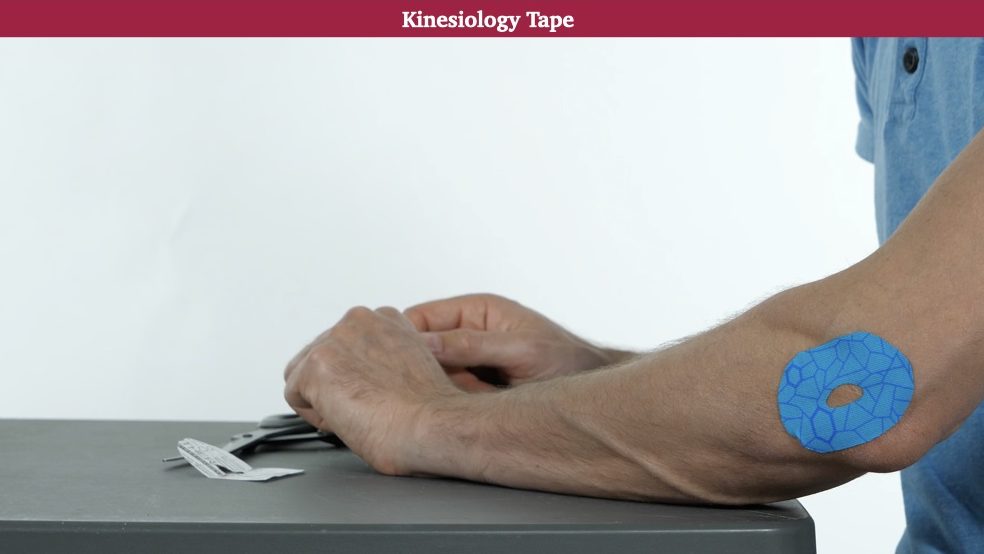
Using tape to unload the joint
This is a subtle tape job that allows climbers to move their elbow into all different positions without worrying about tension from the tape affecting their range of motion. They were able to return to rock climbing and go about their day with this tape job. This allows us to unload the tissues, but we then needed to increase mobility.
Mobility
Pin and Stretch: You can then use a mobility exercise of a pin and stretch for the flexor carpi radialis (FCR) and the flexor carpi ulnaris (FCU). Increased tone and trigger points in these muscles, which the patient did have, can lead to the wrist extensors overworking to compensate for the stiffness in the anterior aspect of the forearm.
With a simple pin and stretch technique, the climber presses into their muscle belly with their thumb while the muscle is in a shortened position. They then extend the wrist and elbow, putting the muscle into a lengthened position.
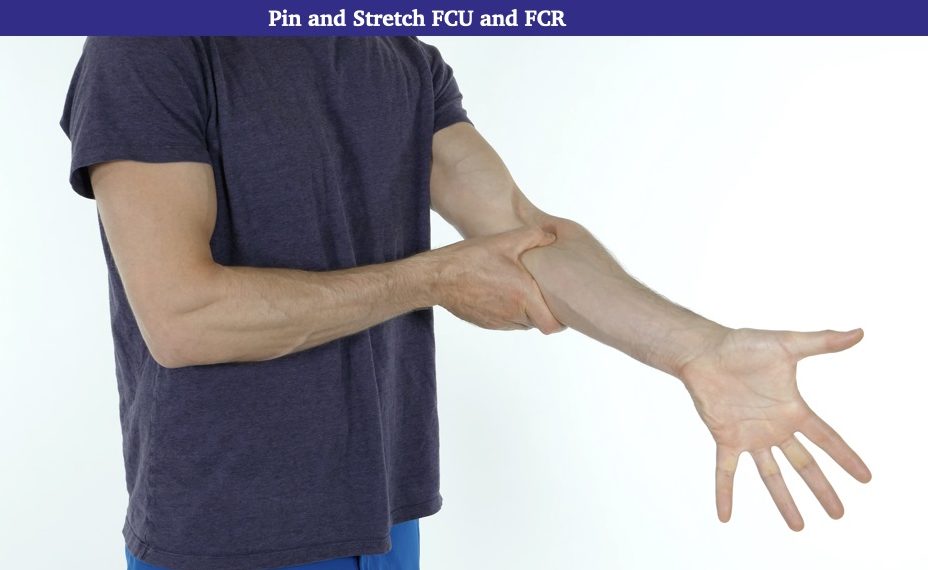
The pin and stretch technique
Superband Wrist Extension: This technique may help decrease trigger points and inhibit the flexor carpi radialis and flexor carpi ulnaris, which results in the climber having decreased tone in their wrist extensors while they’re crimping.
This intervention can be progressed by using a super band to apply extension of the wrist. The super band, being girth-hitched around the hand, will allow the climber to passively extend the wrist with some added overpressure.
To do this, the climber girth hitches a super band around their affected wrist. They wrap the super band around the distal aspect of their contralateral humerus. They pin the desired wrist flexor with their thumb, and as they actively extend their elbow, the super band passively extends the wrist.
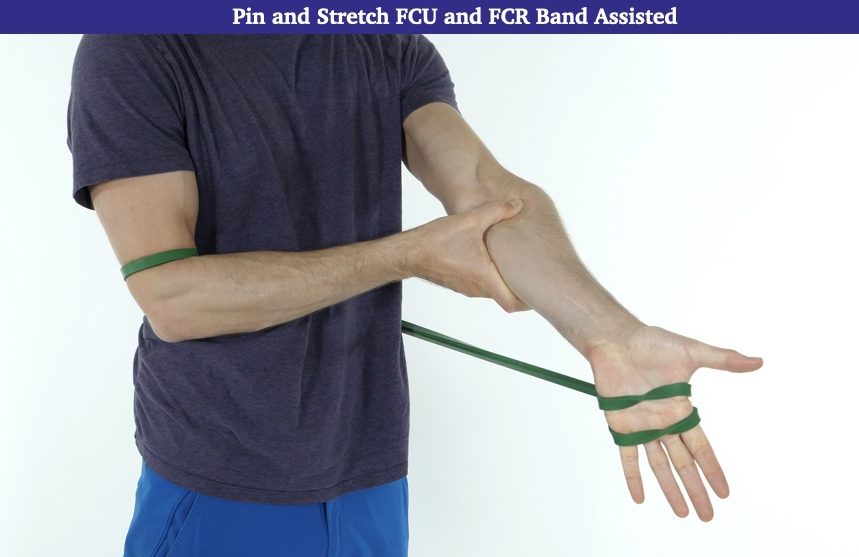
Using a super band with the pin and stretch technique
4 Arm Strong: There is also a device on the market called the 4-Arm Strong that can accomplish the same task of pinning and stretching. When using this device, the climber slides it up their forearm and positions it over the desired muscle to pin. They adjust the knob by turning it in a clockwise direction to increase the pressure on the desired location. They grasp their hand and actively extend their elbow as they passively extend their wrist. The device pins the wrist flexors in place as the climber stretches the wrist flexors into an end range position.
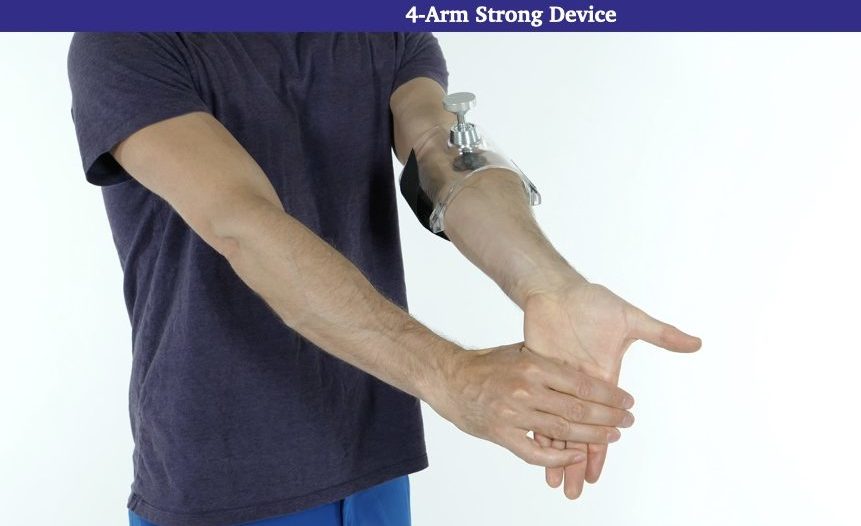
Using the 4-Arm Strong device to pin and stretch
The whole point of the mobility exercises is to reduce the muscle tone of the opposing muscles. The main ones addressed here are the wrist flexors. By pinning and stretching the wrist flexors and decreasing the tone, there’s a greater likelihood that the wrist extensors can contract with less resistance.
Elbow Tendon Gliding: Let’s take the concept of improving mobility in the forearms but add bit of dynamic movement. We can do this through elbow tendon gliding.
You can extend your elbows and wrists simultaneously and perform the tendon glides in various positions. For the wrist extensors in the starting position, the tendons at the wrist lengthen and the tendons at the elbow shorten. The position is then reversed, where the tendons at the wrist shorten and the tendons at the elbow lengthen.
Research Regarding Improving Muscle Performance
Strength
Now that we’ve unloaded the tissues and improved mobility, we can move into improving muscle performance. This is really important for the patient because, if you remember, they previously went through physical therapy, and there was no change. They also went through an eccentric training protocol.
We have to be thinking more in depth about this. Was the protocol correct? Was it incorrect? Were they performing the exercise correctly? We need to look at the research.
Let’s take a deeper dive into the research surrounding eccentrics, concentrics, and isometrics and the results with tendinopathy. Here are three different research papers that assessed various forms of muscle performance exercises in patients who had lateral elbow pain.
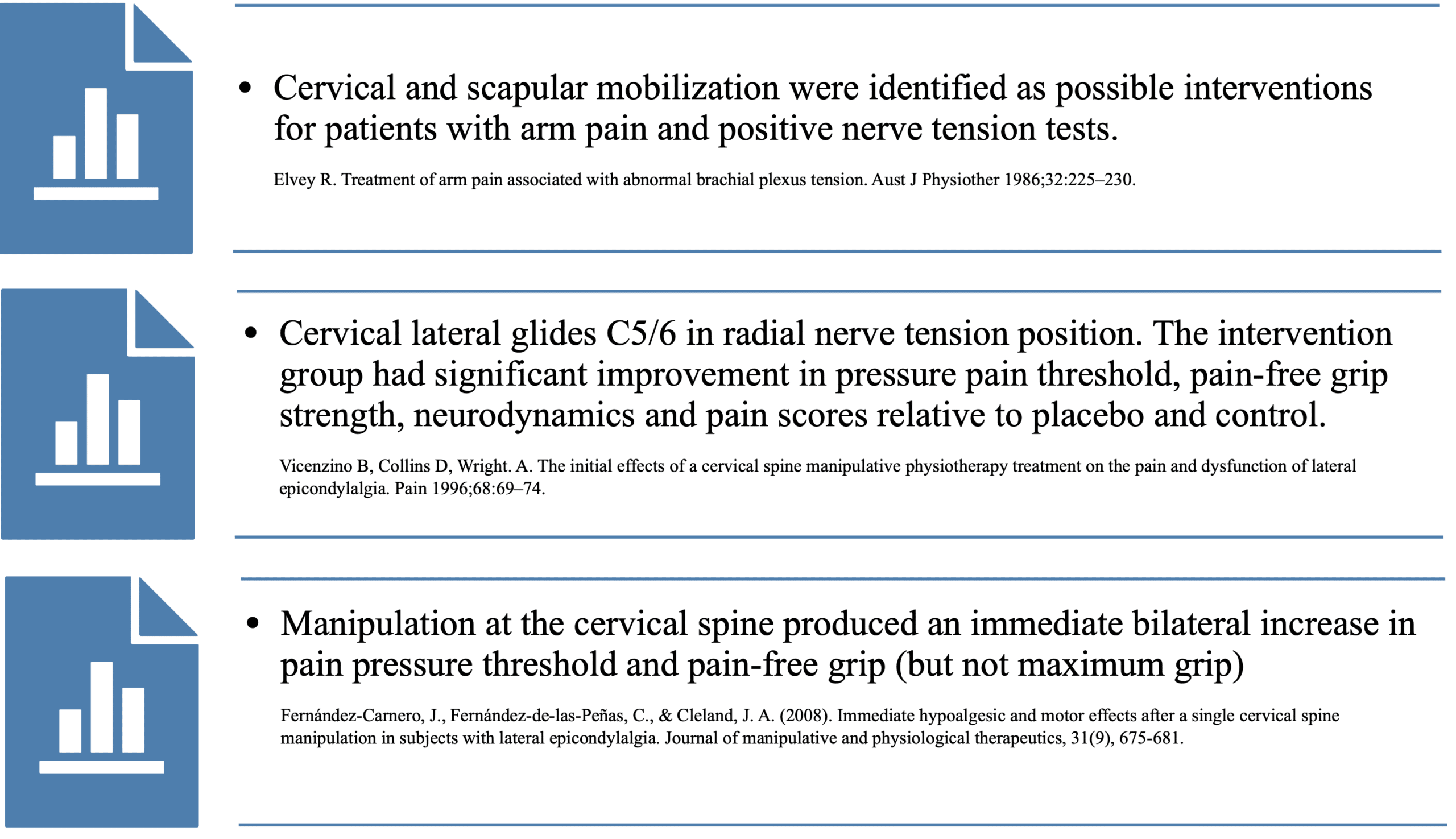
Research into the effectiveness of muscle performance exercises
In the first study, done by Martinez-Silvestrini and colleagues, they looked at the differences between concentric or combined concentric/eccentric programs. What they showed for both groups were improvements in pain, grip strength, and subjective reports.
In the second study, Page only looked at eccentric exercises for patients who have lateral elbow pain. These exercises focused on the wrist extensors utilizing a FlexBar. These eccentric exercises improved strength by 79% compared to 15%, and they improved pain by 81% from 22%.
Stasinopoulos and colleagues took it one step further. They looked at eccentric-concentric training combined with isometric contractions, and they showed that this was the most effective treatment for lateral elbow tendinopathy.
So, whether it’s concentric/eccentric, eccentric, or concentric-eccentric and isometric, there are literature and research to support exercises aimed at reducing pain at the lateral epicondyle and increasing strength, performance, and participation roles.
This is challenging. We have different research studies saying different things, but we also need to look at recent research reports as well as reports that summarize some of this research on tendinopathy, specifically at the lateral elbow. In a study by Coombes et al. they identified the following systematic assessment of lateral epicondylosis literature.
-
- Benefits from exercise alone or as a part of a multimodal physical therapy regime.
- The most optimal exercise intensity, duration, frequency, and type of load for rehabilitation of LET have not been established.
- General guidelines recommend gradually increasing resistance to the wrist extensors.
- Some studies favor isometric, concentric, or eccentric exercise while others indicate no differences between the groups.
- There is conflicting opinion on whether pain should be provoked during exercise. Some insist that pain should be avoided during exercise while others suggest that pain during exercise of less than 5 on a 10-cm visual analog scale is permissible.
It it interesting that the dosage, the exercise intensity, the duration, the frequency, the type of load—none of these have been established. Although there are some general studies, such as the ones mentioned above, that show that isometric, concentric, or eccentric exercises may all have favor, there are other studies that show that there are no differences between these groups.
The one other thing that I want to bring up that this study talks about is the idea of pain: whether or not pain should come on during exercise. Some clinicians insist that pain should be avoided while others suggest 5 out of 10 on a 10-point scale is appropriate.
As we can see, there is a lot of conflicting information. This review stated that general guidelines should be recommended, and there should be some type of gradual and progressive increase in resistance or performing exercises.
Applying the Research
What can we take from this research information? Well, it is important to consider addressing multiple types of rehabilitation in a mutlimodal approach. this is why the rock rehab pyramid is so helpful. And progressive strength exercises are effective, their parameters just haven’t been fully defined. So this information can be used to start building a program.
The Program
The first exercise was a supinator eccentric. The climber can girth-hitch a band around the distal aspect of their radius and ulna and wrapped it in the direction of pronation. They anchored the band onto the wall and supinated when the band was at low tension. They then walked back as far as possible and slowly pronated their forearm. This eccentric exercise can given for 3 sets of 15 repetitions at a resistance that generated 4 out of 10 on the pain scale.
A supinator eccentric exercise
The next exercise I gave him were eccentrics for the wrist extensors. However, instead of using a dumbbell with a closed grip, he used a water bottle that opened up his hand in a position similar to the way he would grip while climbing. I then attached a resistance band to the water bottle and made sure he performed the exercise with both a straight arm and a bent arm. In this way, I could target both extensor carpi radialis longus and extensor carpi radialis brevis, all while he’s performing the exercise with 4 out of 10 pain.
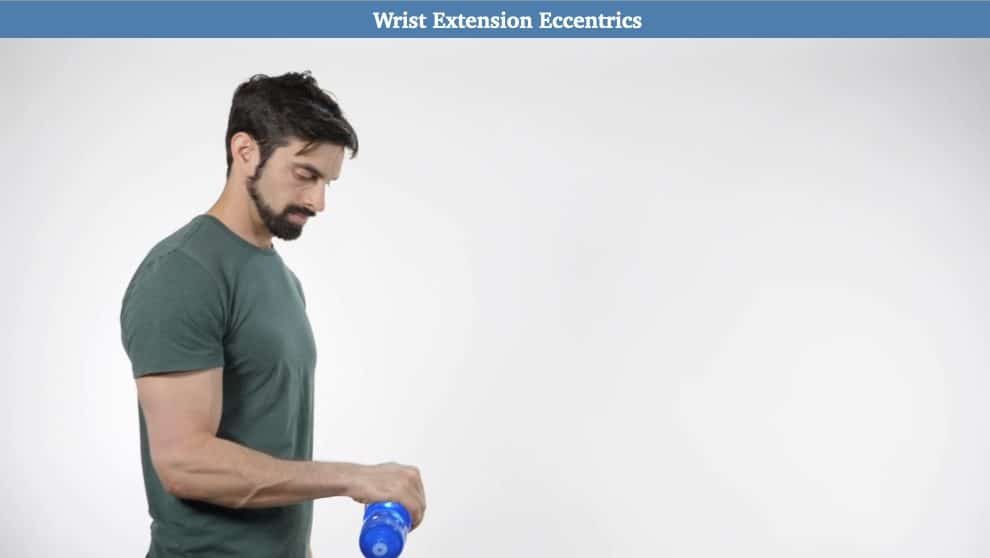
A wrist extensor eccentric exercise
Movement
After I increased the muscle performance of the supinator as well as the wrist extensors, I can then shift toward improving his climbing movement and his grip efficiency.
If the climber is new to the sport we can focus on how to grip. A study by Coombes et al. identified different patterns of gripping and how they relate to lateral elbow pain.
In the video below, you can see that as a climber goes into a crimp grip position, the wrist extension drives their finger flexion. They initiate the movement through the wrist extending first and then the fingers follow. The you will see another pattern, as a climber goes into a crimp grip position, the wrist extension drives their finger flexion. They initiate the movement through the wrist extending first and then the fingers follow.
Comparing grip positions
Contrast that to the second pattern—finger flexion driving wrist extension. The fingers pull into the current position as the wrist slowly follows and extends.
You have these two patterns: wrist extension that drives finger flexion or finger flexion that drives wrist extension. If a climber overuses the muscles that extend the wrist, you may not want them to use that first pattern. You may not want the first muscle that fires when they grasp onto a rock hold to be the extensors of the wrist; rather, you want them to be the finger flexors. Oftentimes with newer climbers, it is common to first pre-position the wrist and then grip with the fingers.
A great tool or effective way to train this grip is to perform gripping on a table and to slowly curl the fingers and relax the muscles in the wrist. This way the majority of gripping can come from the long finger flexors, and the wrist extensor muscles can stay relaxed so they don’t overwork.
Courses for Medical Providers and Coaches
Want to learn more ways to assess, diagnose and treat climbing shoulder and neck injuries? Check out the online course below to expand your knowledge and skillset in the management of rock climbing injuries. Click the course to learn more!
About The Author

Jared Vagy is a doctor of physical therapy who specializes in treating climbing injuries. He is the author of the Amazon #1 best-seller “Climb Injury-Free,” teaches Climbing Injury Professional Education for Medical Providers, and is the developer of the Rock Rehab Protocols. He has published numerous articles on injury prevention and lectures internationally. Dr. Vagy is on the teaching faculty at the University of Southern California, one of the top doctor of physical therapy programs in the USA. He is a board-certified orthopedic clinical specialist. He is passionate about climbing and enjoys working with climbers of all ability levels, ranging from novice climbers to the top professional climbers in the world.
For more education, check out the Instagram page @theclimbingdoctor
- Disclaimer – The content here is designed for information & education purposes only and the content is not intended for medical advice.

